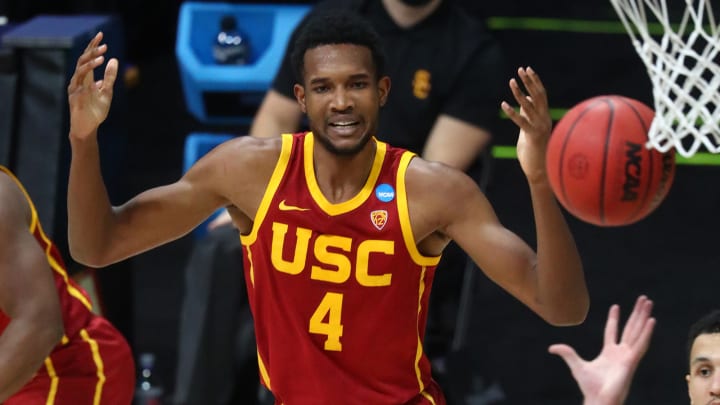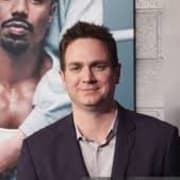The NBA Draft Media Circus Needs a Reboot

Franz Wagner, the sturdy, 6' 9" Michigan forward, is the younger brother of Moritz “Moe” Wagner, a three-year NBA veteran who has bounced between four teams in those three seasons. Before that, though, Moe was a first-round pick, which means for several months in 2018, Moe Wagner endured everything the draft process had to offer, from individual workouts to sit-downs with team officials to perhaps the most tedious task of all: draft week media obligations. “You have got to be ready for it,” Franz said when asked what advice Moe had given him, “You have to experience it to know what it is.”
Moe was, presumably, referring to Franz’s interactions with prospective employers, NBA teams, one of which, according to Sports Illustrated’s Jeremy Woo, will select Franz somewhere in the lottery. But media interviews are often an experience of their own. Traditionally, the NBA will gather the top 15–20 prospects in New York during draft week. They will stick them behind podiums and let reporters, local, national and international alike, have at them. Due to the ongoing COVID-19 pandemic, media availabilities this year were virtual, with 20 players logging on to individual Zoom rooms to be peppered with questions. The same questions.
Want to know whether (insert player name here) worked out for (insert team name here)? This is the most commonly asked query during the 15-minute(ish) calls. The NBA had hoped to head this off by distributing a list of teams each draft prospect had worked out for. Pushback from player agents eventually scuttled that idea, leaving local reporters to attempt to pull it out of them.
Isaiah Jackson, a 6' 10" forward out of Kentucky, worked out for the Hawks, Nets, Hornets, Pacers, Kings and Thunder. Cameron Thomas, a 6' 4” guard from LSU, worked out for the Lakers, Hawks, Knicks, Warriors, Pacers, Hornets and Grizzlies, Thomas said, “just to name a few.” Cade Cunningham, the likely No. 1 pick, worked out for the Pistons … and that was it. “I wanted to meet with the team that had the No. 1 pick,” Cunningham said. “Because I feel like I am the No. 1 pick.”
If a player reveals who he worked out for, it regularly yields a follow-up: fit. Moses Moody, the ex-Arkansas wing, on Sacramento: “Sacramento is good young team, lot of potential, can really [be] growing into something special. Me adding my capabilities, shooting, being versatile … I would be a good piece to add to that program.” James Bouknight, a 6' 5" guard out of UConn, on Golden State: “I think I would fit right in … just playing with Steph [Curry] and Klay [Thompson] and Draymond [Green], being someone who can play off the ball and maybe like relieve some tension when they're in the game.” Thomas, on New York: “They need a bucket getter. … I feel like I could help the team.”
Evan Mobley, the wiry 7-footer from USC, offered a blanket statement on his conversations with teams. “All the conversations with all the teams have gone well so far,” Mobley deadpanned. That didn’t stop questioners, of course, from attempting to pry loose opinions on fit. On playing alongside Detroit’s young core: “I feel like I can adapt to a lot of different things,” Mobley said. Sharing a front court with Rockets big man Christian Wood: “I want to be in the best situation possible. I’m going to do my best. I feel I can play alongside with anyone.” On a two-big front court with Cavs center Jarrett Allen: “I feel like I get along with a lot of players very well.” By the end, judging by Mobley’s demeanor, a root canal would have been preferable to more follow-ups.
And comps—can’t forget comps. Asking prospects for basketball comparisons is a media week staple. Keon Johnson, a 6' 5" two guard out of Tennessee, pattered his game after Kawhi Leonard. Jalen Johnson, a 6' 9" forward out of Duke, mentioned Ben Simmons. Moody cited Kevin Durant. “I feel like all tall lanky kids looked up to Kevin Durant,” said Moody, before rattling off CJ McCollum and Bradley Beal as other role models.
In fairness, there were some interesting answers. Jalen Suggs, the 6' 4" ex-Gonzaga star, is a projected top-five pick. Before that, he was a star high school football player in Minnesota. Asked how football has helped him succeed in basketball, Suggs said, “You see it in the aggressiveness. How I embrace contact. That directly comes from the football field. Vision, from being a safety, reading eyes, reading body language. Quarterback-wise, reading defenses and the ability to fit [the ball] in those tight windows.” Playing two sports, says Suggs, makes him the player with the highest upside. “I haven’t been a full-time basketball player yet,” Suggs said. “It’s scary to think how good I can become.”
And there were others. Cunningham, who was raised in Arlington, Texas, said Dirk Nowitzki was who made him fall in love with basketball. “He was the biggest thing going,” Cunningham said. “In 2011 [when the Mavericks won the NBA title] the whole city was rumbling. He got buckets.” Jalen Johnson, irked by some of the character attacks leveled at him after his decision to leave Duke midway through last season, said whoever drafted him is getting a “great kid.” “I don’t like seeing [the negative] stuff,” Johnson said. “I know my parents see that stuff. I know that hurts them. [Critics] are making judgments without knowing me, without speaking with me. So the fact that people are saying I’m a bad character kid off essentially a decision I made—a 19-year-old kid made—it’s kind of crazy. Whoever’s saying that, it’s just not true.”
Yet for the most part, these gaggles, virtual and otherwise, are useless. It’s not the player's fault. What does a player gain by describing a potential fit as terrible, even if it is? The system is simply broken. Beginning next year, the NBA should issue player profiles before every group interview. They should list which teams each player worked out for and who each player compares himself to (and, to stave off the inevitable follow-up, why). Local reporters will—and, understandably, should—ask about potential fits, but perhaps future questions can be more specific to avoid, say, a point guard twisting himself into a pretzel explaining why he fits on a team with three of them.
Until then, these media availabilities will be little more than perfunctory. Especially if more players, like Wagner, get wise to them. Asked about workouts with the Knicks and Nets, Wagner informed the room he didn’t plan to reveal who he worked out for. He repeated that minutes later, when asked about the Warriors. Of course, there were still questions about fit with New York and Golden State. So, for posterity, on the Knicks, “every team needs big wings that can move and can shoot, make decisions with the ball and play defense. Those are the things that I’m good at.” And the Warriors, “I would fit in really well. Two great shooters next year, probably the best point guard in the game. What they need, my versatility, would help that team a lot.”
There you have it. Knicks, Warriors … you are on the clock.
More NBA Coverage:
• NBA Mock Draft 6.0: Dust Settles on Top Three
• NBA Draft Big Board: Final Top 80 Rankings
• NBA Free Agency Rankings
